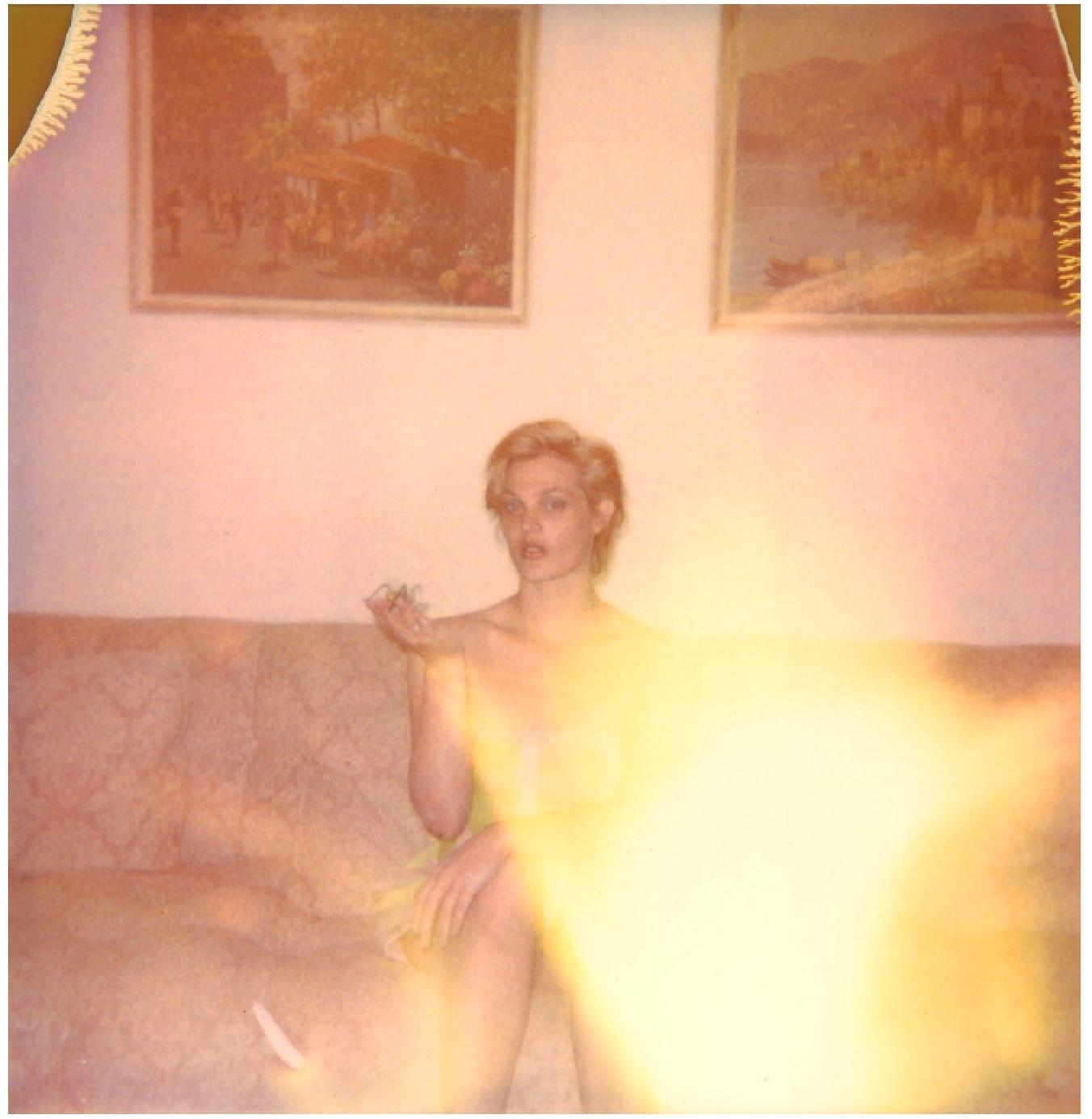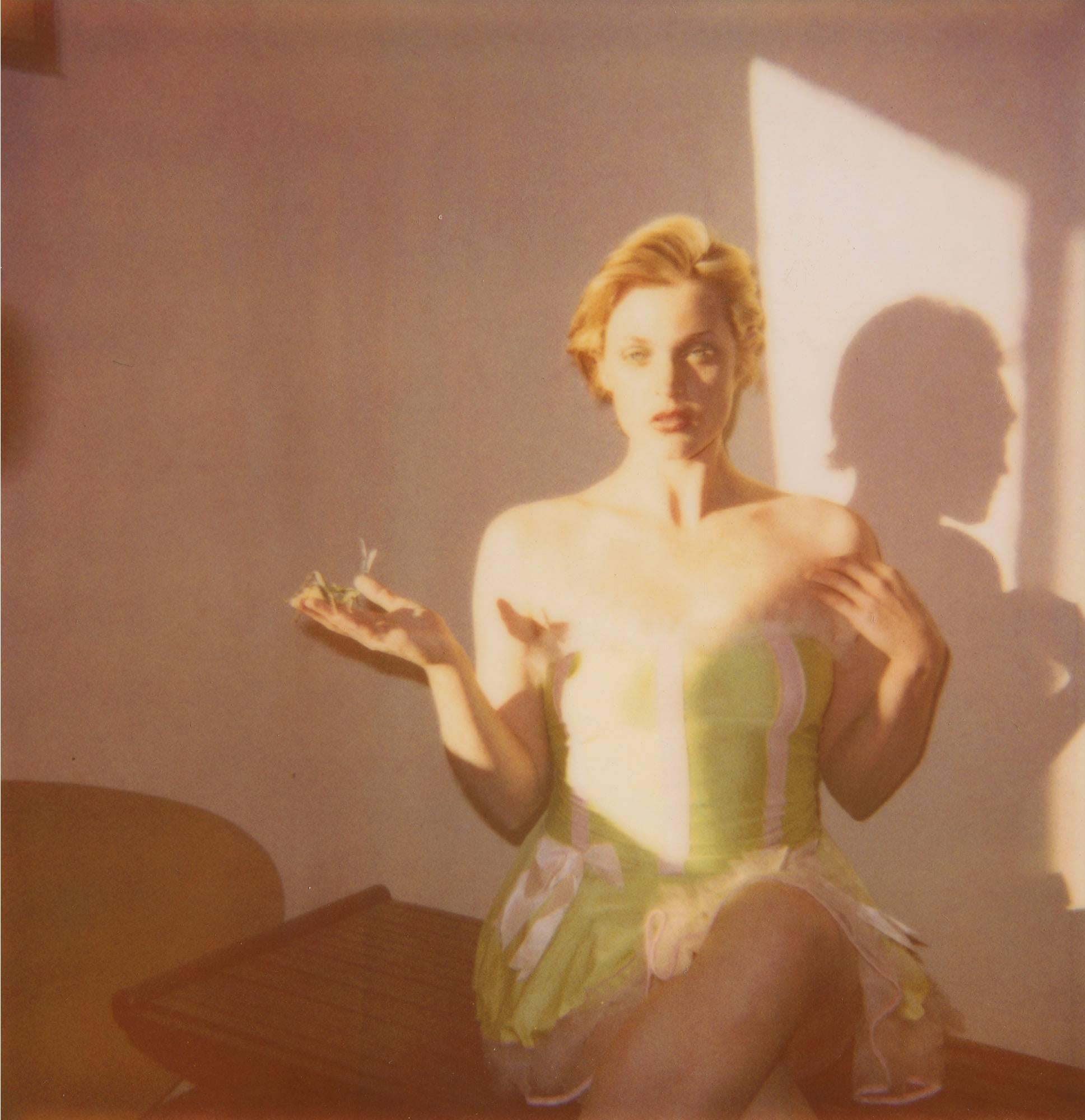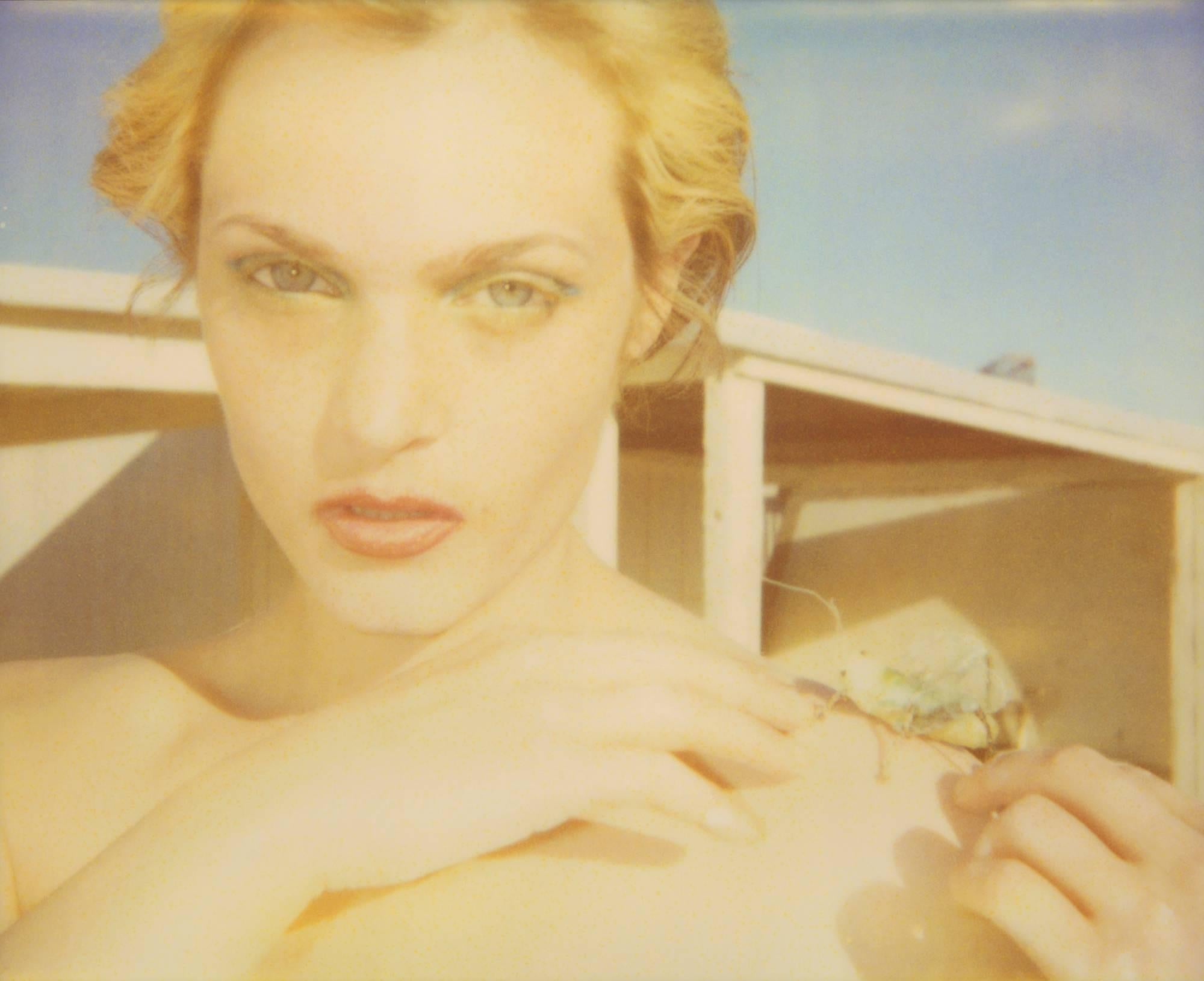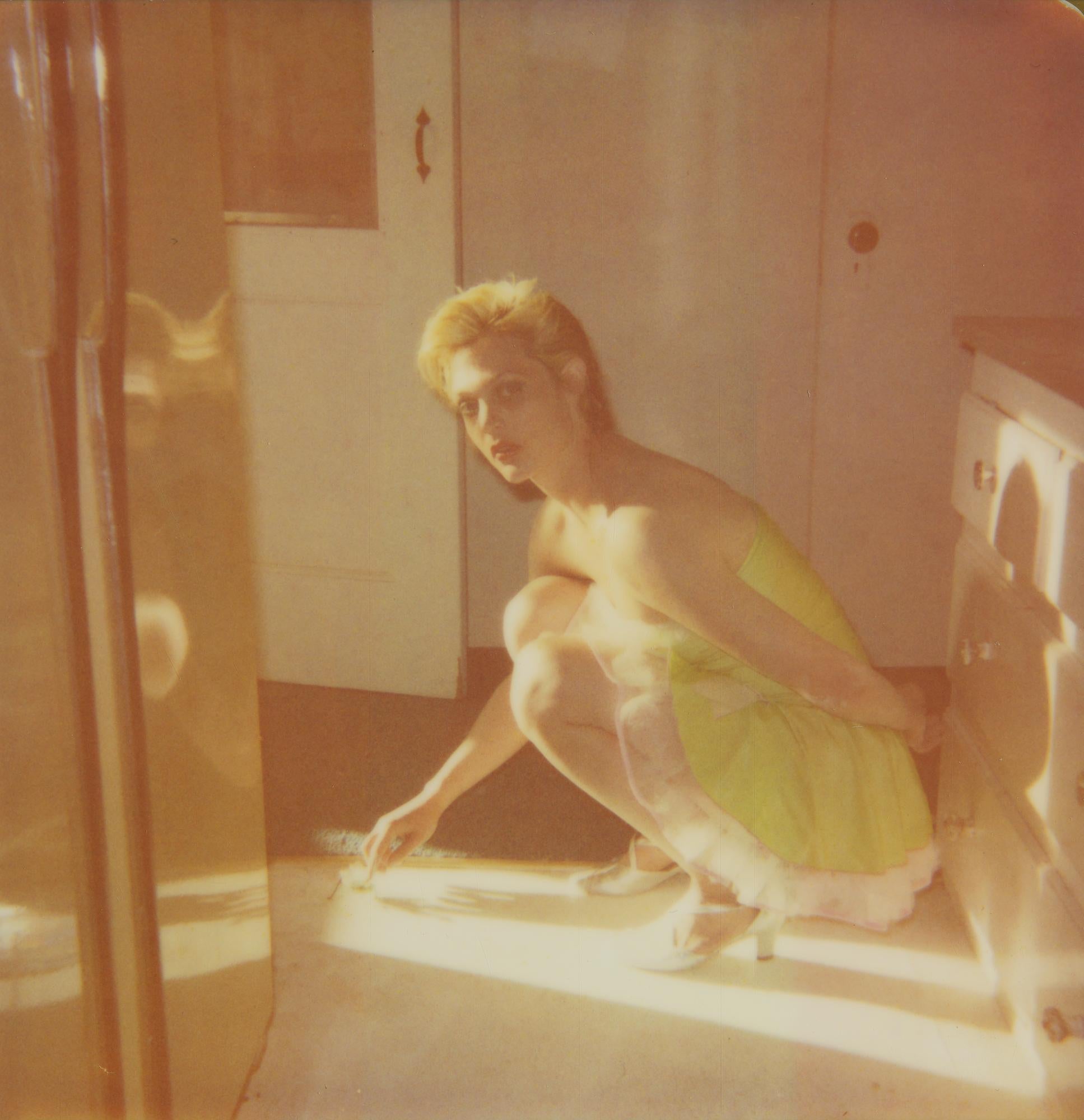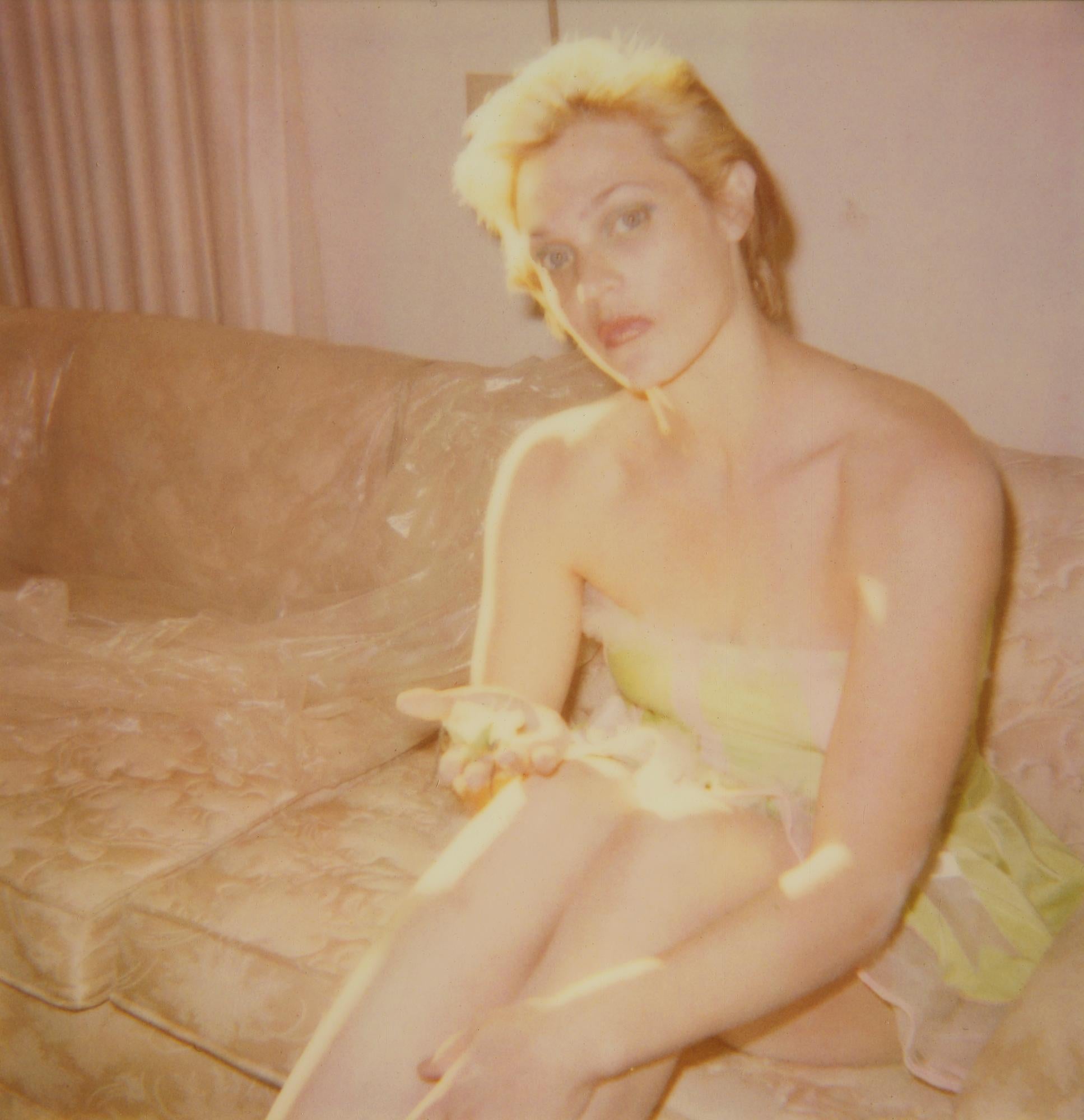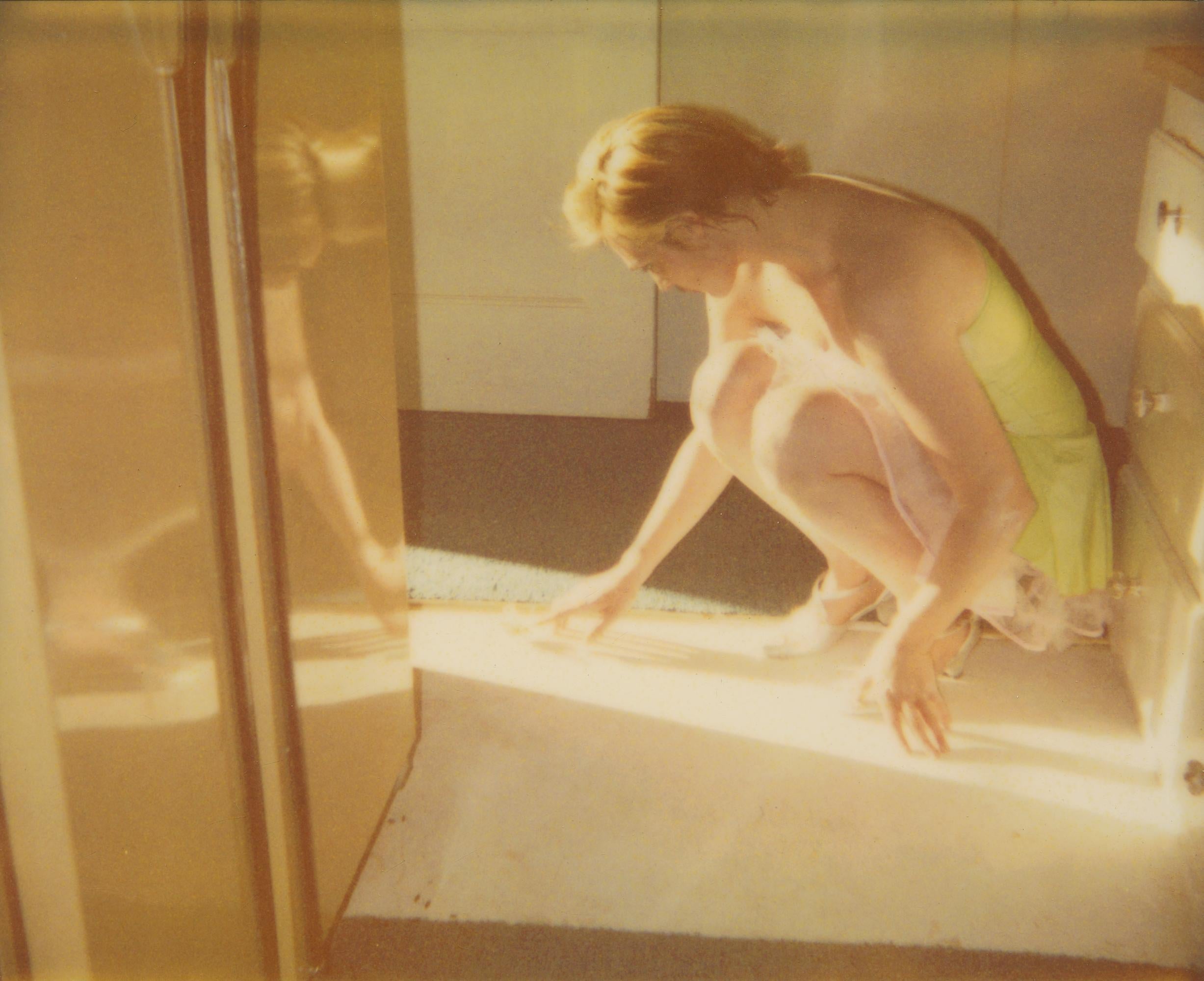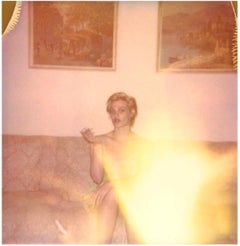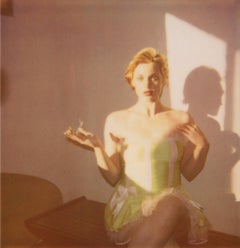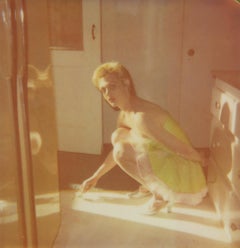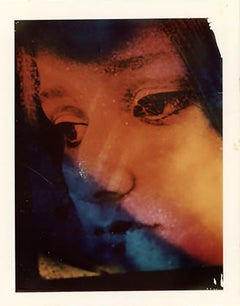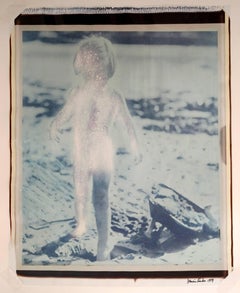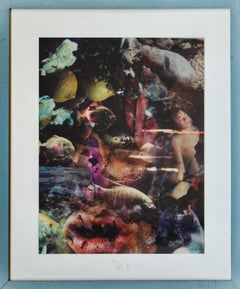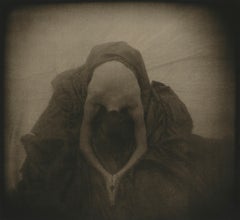Items Similar to Cricket on the Nose Scene - Untitled - 29 Palms, CA, analog, mounted
Want more images or videos?
Request additional images or videos from the seller
1 of 18
Stefanie SchneiderCricket on the Nose Scene - Untitled - 29 Palms, CA, analog, mounted2009
2009
$2,000
£1,517.84
€1,748.33
CA$2,858.02
A$3,136.65
CHF 1,617.66
MX$37,469.51
NOK 20,498.71
SEK 19,208.25
DKK 13,056.76
About the Item
'Untitled' (Cricket on the Nose Scene) from the 29 Palms, CA series, - 2009,
56x56cm, Edition 1/5,
analog C-Print, hand-printed by the artist, based on a Polaroid
signed on verso, artist inventory number: 10032.01,
Mounted on Aluminum with matte UV-Protection.
29 PALMS, CA is a film / art piece that explores and chronicles the dreams and fantasies of a group of individuals who live in a trailer community in the Californian desert. The world depicted in the film is inspired by the photographs of German artist Stefanie Schneider in that it combines the notions of reality and fantasy and
explores the resonance of both within a desert landscape and a transient culture. The characters portrait in the film, (an actress, a singer, a DJ, a motel owner and his wife, a US army soldier, a mystic, a princess, a recluse, a movie ticket seller, two hitchhikers, a doctor, and so on), are to be played by both actors and non-actors. The story is constructed through the interpretation of real life communications (i.e. phone calls, emails, conversations) that have taken place as the individuals depicted in the story try to make sense of events that have occurred in real life. In this sense the story is, in part, a biography and social commentary, and the characters are the exaggerated alter egos of the individuals who play them. The structure of the plot is fairly simple. An actress working as a telemarketer is inspired by a singer who is new to town and is featured on the local radio station. The radio station runs a program for lonely hearts and a charismatic DJ uses the show to reveal the hopes and dreams of the towns “hottest women”. One night a panicked German female caller captivates the community with a painful story about a sexy “Smoke Jumper” (a mysterious and super real alpha male). Everybody in town is listening to the program and nobody is quite sure what to say. Life in general continues and we witness and explore the various interactions. The actress meets the singer and they become famous. The US Army soldier dies on his way to battle. The foreign princess discovers that the jewels she has come to sell are fake. The motel owner‘s wife has an affair with the pool boys and so on. All the while the community is united by their loyalty to the “Lonely Hearts” radio show and through the disturbing revelations of the German woman and the details of her sordid affair. The stories she tells are explored through the imaginations of the listeners and through the memories of the teller. The smoke jumper becomes a pervasive figure who in some way effects the lives of all those who listen to the story. He seduces women, is linked to a local thievery, a rape and a possible death. The story comes to conclusion when this chaotic character quits town leaving in his wake a trail of destruction and despair. What is left is a void, a space for transformation as the wounded community rediscovers itself in its quest to make sense of what has happened. A defining feature of the project is the use of still images and the use of voice over. Characters talk to us / themselves / you about their ambitions, memories, hopes, fears and dreams. The project is to be shot using a mix of super 8 film stock and Polaroid images. Certain creating the films surreal mood and its dark humor.
Stefanie Schneider's Polaroid photography is often described as "timeless," "nostalgic," and "dreamlike." Her use of expired Polaroid film, with its unpredictable colors and textures, creates a sense of unreality in her images and creating a sense of fragmentation and ambiguity that blurs the boundaries between past and present, and it creates a sense of memory as a fluid, shifting concept.
Schneider's interest in Americana motifs, particularly those associated with the 1950s and 1960s, speaks to a sense of longing for a bygone era. Her images of motels, diners, and vintage cars evoke a sense of nostalgia for a time that may never have existed in reality. At the same time, these motifs are often paired with images of decay and abandonment, which suggest a darker, more complex interpretation of the American dream.
Schneider's depictions of women are also a significant aspect of her art. Her female subjects are often depicted in states of undress, but the images are not intended to be exploitative or objectifying. Rather, they are intended to explore the complexity of human relationships and emotions. Schneider's women are often depicted in moments of vulnerability, suggesting a sense of shared humanity and a challenge to traditional notions of female beauty and perfection.
Overall, Schneider's Polaroid photography is a deeply evocative exploration of memory, nostalgia, and the human experience. Her art challenges viewers to question their own perceptions of reality and to consider the complex, shifting nature of time and memory.
Stefanie Schneider received her MFA in Communication Design at the Folkwang Schule Essen, Germany. Her work has been shown at the Museum for Photography, Braunschweig, Museum für Kommunikation, Berlin, the Institut für Neue Medien, Frankfurt, the Nassauischer Kunstverein, Wiesbaden, Kunstverein Bielefeld, Museum für Moderne Kunst Passau, Les Rencontres d'Arles, Foto -Triennale Esslingen, Bombay Beach Biennale 2018.
- Creator:Stefanie Schneider (1968, German)
- Creation Year:2009
- Dimensions:Height: 22.84 in (58 cm)Width: 22.05 in (56 cm)Depth: 0.12 in (3 mm)
- Medium:
- Movement & Style:
- Period:
- Condition:
- Gallery Location:Morongo Valley, CA
- Reference Number:Seller: 100151stDibs: LU652312257882
Stefanie Schneider
Stefanie Schneider received her MFA in Communication Design at the Folkwang Schule Essen, Germany. Her work has been shown at the Museum for Photography, Braunschweig, Museum für Kommunikation, Berlin, the Institut für Neue Medien, Frankfurt, the Nassauischer Kunstverein, Wiesbaden, Kunstverein Bielefeld, Museum für Moderne Kunst Passau, Les Rencontres d'Arles, Foto -Triennale Esslingen., Bombay Beach Biennale 2018, 2019.
About the Seller
4.9
Platinum Seller
Premium sellers with a 4.7+ rating and 24-hour response times
Established in 1996
1stDibs seller since 2017
1,047 sales on 1stDibs
Typical response time: 3 hours
- ShippingRetrieving quote...Shipping from: Morongo Valley, CA
- Return Policy
Authenticity Guarantee
In the unlikely event there’s an issue with an item’s authenticity, contact us within 1 year for a full refund. DetailsMoney-Back Guarantee
If your item is not as described, is damaged in transit, or does not arrive, contact us within 7 days for a full refund. Details24-Hour Cancellation
You have a 24-hour grace period in which to reconsider your purchase, with no questions asked.Vetted Professional Sellers
Our world-class sellers must adhere to strict standards for service and quality, maintaining the integrity of our listings.Price-Match Guarantee
If you find that a seller listed the same item for a lower price elsewhere, we’ll match it.Trusted Global Delivery
Our best-in-class carrier network provides specialized shipping options worldwide, including custom delivery.More From This Seller
View AllCricket on the Nose Scene - Untitled II - 29 Palms, CA, analog, mounted
By Stefanie Schneider
Located in Morongo Valley, CA
'Untitled II' (Cricket on the Nose Scene) from the 29 Palms, CA series - 2009
56x56cm, Edition 1/5,
analog C-Print, hand-printed by the artist, based on a Polaroid
signed on verso,...
Category
Early 2000s Contemporary Color Photography
Materials
Metal
Cricket on the Nose Scene - Untitled - 29 Palms, CA
By Stefanie Schneider
Located in Morongo Valley, CA
'Untitled' (Cricket on the Nose Scene) from the 29 Palms, CA series, - 2009
80x80cm,
Edition of 10,
digital C-Print based on the Polaroid
Certificate and signature label,
artist ...
Category
Early 2000s Contemporary Color Photography
Materials
Photographic Paper, C Print, Color, Polaroid
Cricket on the Nose Scene - Untitled - from the 29 Palms, CA project
By Stefanie Schneider
Located in Morongo Valley, CA
Untitled (Cricket on the Nose Scene) from the 29 Palms, CA series - 2009
40x50cm,
Edition of 10 plus 2 Artist Proofs.
Archival Print based on the Polaroid.
Certificate and signat...
Category
Early 2000s Contemporary Color Photography
Materials
Archival Paper, Photographic Paper, C Print, Color, Polaroid
Untitled - Cricket on the Nose Scene - (29 Palms, CA)
By Stefanie Schneider
Located in Morongo Valley, CA
Untitled - Cricket on the Nose Scene - (29 Palms, CA) - 2009
20x20cm,
Edition of 10 plus 2 Artist Proofs.
Archival C-Print, based on the original Polaroid.
Certificate and Signatu...
Category
Early 2000s Contemporary Portrait Photography
Materials
Archival Paper, Photographic Paper, C Print, Color, Polaroid
Untitled - Cricket on the Nose Scene - (29 Palms, CA)
By Stefanie Schneider
Located in Morongo Valley, CA
Untitled - Cricket on the Nose Scene - (29 Palms, CA) - 2009
20x20cm,
Edition of 10 plus 2 Artist Proofs.
Archival C-Print, based on the original Polaroid.
Certificate and Signatu...
Category
Early 2000s Contemporary Portrait Photography
Materials
Archival Paper, Photographic Paper, C Print, Color, Polaroid
Untitled - Cricket on the Nose Scene - (29 Palms, CA)
By Stefanie Schneider
Located in Morongo Valley, CA
Untitled - Cricket on the Nose Scene - (29 Palms, CA) - 2009
40x50cm,
Edition of 10 plus 2 Artist Proofs.
Archival C-Print, based on the original Polaroid.
Certificate and Signatu...
Category
Early 2000s Contemporary Portrait Photography
Materials
Archival Paper, Photographic Paper, C Print, Color, Polaroid
You May Also Like
Sleeping Beauty Eyes, Palm Springs, CA
By Kali
Located in New York, NY
Estate stamped on the reverse
Category
1960s Photography
Materials
Polaroid
Price Upon Request
Large Format Vintage Color 20X24 Polaroid "Radiant Child" signed and dated
By Dennis Farber
Located in Surfside, FL
30X26 with Mat. (20X24 inch polaroid) From The New York Times: Dennis Farber abducts children from photographic illustrations in children's books of the 30's. He paints Ku Klux Klan costumes on some toddlers at a birthday party, as if he could see their character and future by the light of the birthday candles...
Category
1980s Figurative Photography
Materials
Photographic Paper
Jane Calvin Composite Photograph, 1990
By Jane Calvin
Located in New York, NY
Jane Calvin (American, b. 1938)
Untitled, 1990
Photograph
Sight: 19 1/2 x 15 1/2 in.
Framed: 26 7/8 x 22 1/2 x 1 1/4 in.
Edition 2/10
Provenance: Collection of Robert Burge, New Y...
Category
1990s Contemporary Color Photography
Materials
Color
Prayer 2001, Los Angeles
By Ron Hamad
Located in Hudson, NY
This listing is for the unframed photograph.
The Robin Rice Gallery proudly announces SUMMERTIME Salon 2019, an annual photography exhibit featuring gallery artists as well as a fe...
Category
Early 2000s Contemporary Color Photography
Materials
Digital Pigment
Messages 10:19 – Emma Summerton, Fine Art Photography, Color, Framed Artwork
By Emma Summerton
Located in Zurich, CH
EMMA SUMMERTON (*1970, Australia)
Messages 10:19, 2023
Archival pigment print on Hahnemühle paper in white distance frame
Sheet 27.4 x 23.2 cm (10 3/4 x 9 1/8 in.)
Frame 28.7 x 24.6 ...
Category
2010s Contemporary Color Photography
Materials
Archival Pigment
Price Upon Request
Free Shipping
Messages 13:19 – Emma Summerton, Fine Art Photography, Color, Framed Artwork
By Emma Summerton
Located in Zurich, CH
EMMA SUMMERTON (*1970, Australia)
Messages 13:19, 2023
Archival pigment print on Hahnemühle paper in white distance frame
Sheet 23.2 x 27.4 cm (9 1/8 x 10 3/4 in.)
Frame 24.6 x 28.7 ...
Category
2010s Contemporary Color Photography
Materials
Archival Pigment
Price Upon Request
Free Shipping
